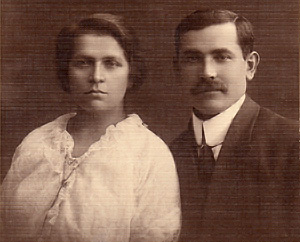Immigration
We are able to reconstruct immigrants’ journeys using information from family stories and passenger manifests. We encourage you to look at the information on the families page for more details about individual experiences and to contribute information about your family.
For those traveling to the New World, one of the closest ports of embarkation was Libau, now known as Liepaja, Latvia. However, Stoliners used ports all over Eastern, Central and Western Europe, such as Hamburg and Trieste. In order to get to these cities the most common form of transportation was by foot, often crossing through dangerous territory and sneaking across borders.

Once they arrived at a port city, these would-be immigrants had to purchase tickets for what was a significant sum of money for poor families from the Pale. More often than not this was also done through a significant language barrier, and inexcusably swarms of scam artists would do their best to take advantage of the naive and isolated.
Depending upon the year that they left, the journey to New York, Boston, Philadelphia, etc. could take the better part of a month or merely a week. Almost all traveled via steerage in the most cramped and unhealthy conditions imaginable. Passengers could begin the voyage healthy and upon arrival be turned down for admission into the U.S. because of something they had contracted while on the ship.
For the people that arrived at Ellis Island there was a long and nerve racking wait to be processed. Many travelers were set aside for further screening and the unfortunate were sent back. Those that were allowed to enter were taken to Manhattan at left to their own devices. Though they were all supposed to have had relatives or friends to stay with that was often not the case.
With all these challenges behind them—leaving their homes, their loved ones, most travelling for the first time, facing dangerous conditions and not understanding most of what was going on around them—some of the biggest challenges hadn’t even begun. Once in their new cities they needed to find lodging, work, learn the language, and save money to eventually send for the rest of their family. Some even returned to the Pale because they couldn’t make ends meet.
Those that did make the journey, whether to the U.S. or other points across the globe, and withstood the struggle to start a new life are the reason that we are here today. G-d bless them!




